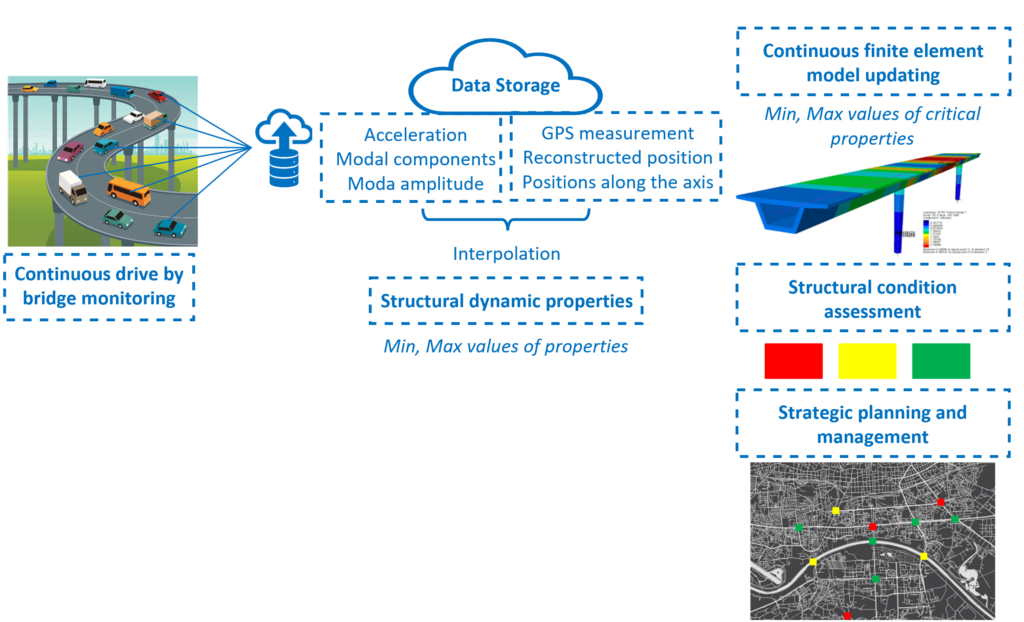
Effective and timely bridge maintenance is critical to ensure long-term structural integrity and safety. Project SMART introduces an innovative, cost-effective approach to bridge maintenance that enhances long-term structural integrity while optimizing resource allocation. The method relies on integrating acceleration data collected from everyday vehicles equipped with smartphones into the continuous process of finite element model updating (FEMU). Using smartphones’ built-in accelerometers, vehicles crossing bridges daily capture the bridge’s dynamic response under various loads. The extracted dynamic parameters obtained by collecting and processing the acceleration data collected by smartphones, such as natural frequencies and mode shapes, are then used to update a finite element model of the bridge, accurately representing its current structural state and performance.
Continuous model updating allows the detection of structural changes, such as variations in material properties or cross-section dimensions. Analyzing these changes helps identify potential damage or degradation, enabling timely maintenance interventions. The proposed approach tackles significant challenges in traditional structural health monitoring (SHM), such as high costs, complexity, and the need for dedicated sensors. By using passing vehicles and smartphones, this system offers a scalable, cost-effective alternative for monitoring large networks of bridges. Moreover, real-time data integration allows for more frequent condition reports, reducing the risk of unexpected structural failures and facilitating proactive maintenance.
In addition to improving safety, this method optimizes maintenance efforts by prioritizing areas of concern. A risk analysis is integrated into the system to determine which sections of the bridge require immediate attention, streamlining the process and helping governments allocate resources more efficiently. The continuous monitoring and model updating ensure the effective management of bridge maintenance by providing maintenance professionals with in-depth insights into the bridge’s structural behavior. This approach offers a strategic and practical solution to extend the lifespan of critical infrastructure. By leveraging everyday vehicles, smartphone technology, and advanced modeling techniques, it revolutionizes how bridge networks are monitored and maintained. Ultimately, it enhances safety, minimizes repair costs and downtime, and ensures the long-term durability of transportation infrastructure, representing a significant advancement in bridge maintenance practices.

Marie Curie Skłodowska Postdoctoral Fellowship project